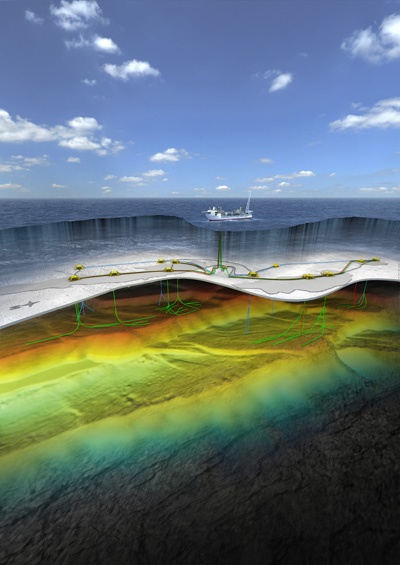Statoil has, as operator for the Johan Castberg project, distributed a proposed impact assessment program for the largest field yet to be developed on the Norwegian continental shelf (NCS).
“During our improvement work we have created new opportunities for the Johan Castberg field in the far north. We have changed the concept and found new solutions that allow us to realize the project. But we are still vulnerable to increasing costs and a continued low oil price,” says Margareth Øvrum, executive vice president for Technology, Projects and Drilling in Statoil.
 Johan Castberg field. Image courtesy: Statoil
Johan Castberg field. Image courtesy: Statoil
The proposed impact assessment program is an essential part of the preparations before a final development plan for Johan Castberg is submitted in 2017, according to schedule. The plan will present the development, relevant development solutions and expected impacts on other businesses and communities. The proposed program is being sent to consultative bodies today to allow them to submit any issues for discussion during the consultation process related to the Johan Castberg impact assessment work.
“The Johan Castberg project may be a central project for further development of the NCS and in the far north. The field will provide significant tax income. The field development and operation will also create new opportunities for the industry throughout Norway and in North Norway in particular,” says Arne Sigve Nylund, executive vice president for Development and Production Norway.
Based on a spin-off report from Agenda Kaupang the Johan Castberg project, based on an investment estimate of between NOK 50 and 60 billion, will represent a significant part of NCS investments in the period 2018-2022. The first phase of the Johan Sverdrup development will be completed in this period. A continued low oil price may affect these plans.
According to Agenda Kaupang’s report the expected value creation in Norwegian supplies of goods and services to Johan Castberg amounts to NOK 29 billion, more than half of the project’s total investments. Value creation in North Norway during the development period is estimated to be NOK 1.7 billion.
“The Johan Castberg field will be producing for more than 30 years, and the major project spin-offs will be created in the long-lasting production phase. Castberg will trigger much activity for suppliers in North Norway and have ripple effects throughout Norway Norway, both in the development phase and the operating phase. In a normal year of operation the Johan Castberg field will generate 1200 man-years in Norway, of which 300 are expected to be in North Norway,” says Nylund.
Recommended power solution for Johan Castberg Statoil has, on behalf of the license, made an extensive analysis of possible power solutions for Johan Castberg. Aker Solutions, Aibel, ABB, Unitech, Pöyry and Thema Consulting have contributed to the power analysis. The power solutions include full and/or partial electrification based on power from land as well as gas-fired power.
Due to the long distance and technical challenges the cost of the measures related to partial/full electrification will be high, from just above NOK 5000 per ton of CO2 to just above NOK 8000 per ton of CO2. Investment costs for full/partial electrification will span from more than NOK 4 billion to just above NOK 12 billion. The Johan Castberg power solution effort reveals that costs related to land-based power, including technical challenges, represent a risk to both the timeline and feasibility of the project.
“We have developed a highly energy-efficient solution involving use of gas turbines for power generation on Johan Castberg. By use of heat recovery we achieve a turbine power efficiency of 64%, which is an outstanding result from use of gas turbines on offshore platforms. The license partners consider gas-fired power to be the most suitable and socio-economic solution for the development,” says Øvrum.
Johan Castberg will be prepared for future electrification by use of alternating current technology in case this becomes an efficient and feasible solution in the future.
Emissions from Johan Castberg by use of gas turbines will be 0.27 million tons of CO2 per year, or 2% of current annual emissions from the NCS.
The proposed impact assessment program covers only the offshore field development, not a possible terminal at Veidnes, which is a separate project with a separate timeline. Statoil is cooperating with the other licenses on Wisting, Goliat and Alta/Gotha to secure sufficient volume and a profitable basis for a terminal.

